Chromecast Audio Speaker V2
Following the relative success of my first ChromeCast Audio speaker, I have decided to build another. Despite not getting around to finishing off the cases, both the original prototype and a second production speaker have been in almost daily use. Both sound good for the price of the speakers, with the original prototype sounding nicer to my ears, mostly because of the slightly larger drivers (5.25" vs 4") and a slightly large box volume. I have uploaded a video of the production speaker to my you tube channel DIY Home Build Multiroom Speaker where I discuss the build.
As mentioned in the video the new version will utilise the acclaimed Overnight Sensations design by Paul Carmody. I am hoping this will give a significant increase in sound quality. Paul's design uses the Hivi B4N woofer and Dayton Audio ND20FA-6 tweeter
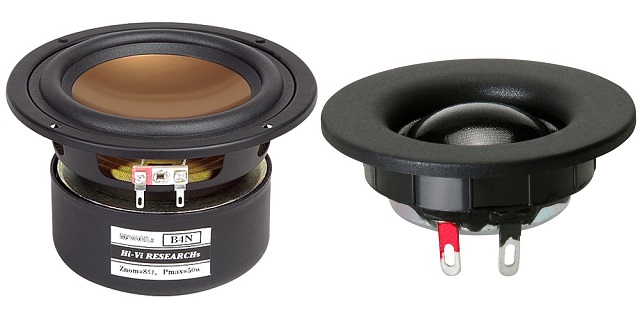
Hardware
I am sticking with the 15W per channel TA2024 amps , mostly because I bought several already, I don't need massive power and they sound fine.
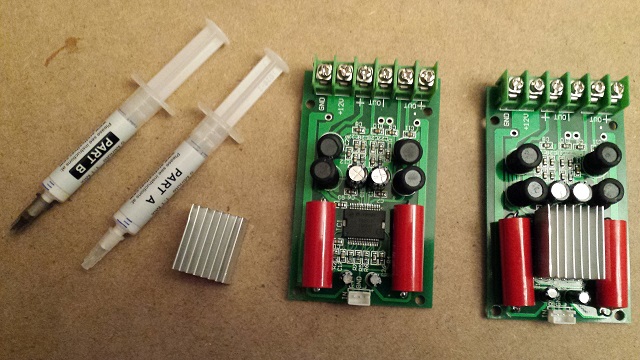
Revised Design
This time I designed the enclosure in Autodesk Fusion 360. I have opted for a more adventurous cabinet shape, which will again be constructed from slices of 1 inch MDF. Unlike the first design I will be separating the woofer chambers and using Fusion 360 I was able to determine that I need 8 x 1 inch slices to obtain the 4.5 litres volume per chamber required by Paul Carmody's design. I am hoping the finished speaker will look like this.
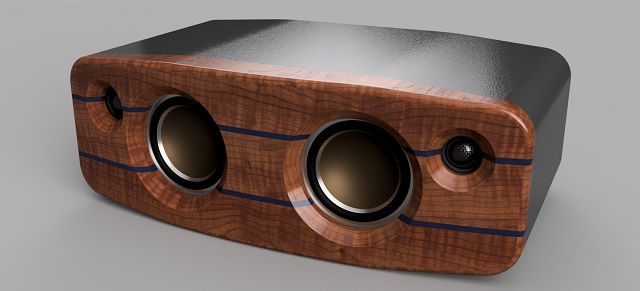
One of the issues with the construction of the original cabinet was making the MDF slices the same shape. Using Fusion 360 to model the cabinet design I have been able to 3D print a router template so that all the slices are exactly the same size and shape. I had to print this in 3 pieces that were then glued together.
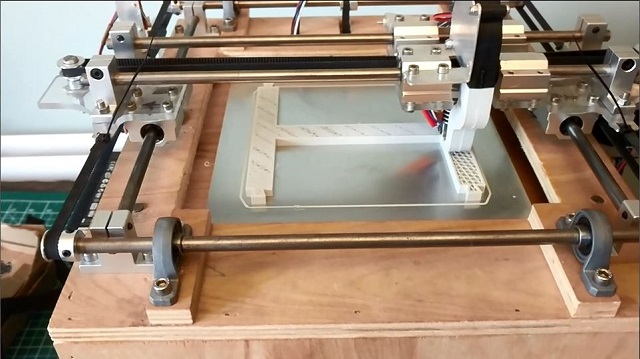
Using the template I marked out the cabinet shape on the MDF slices.
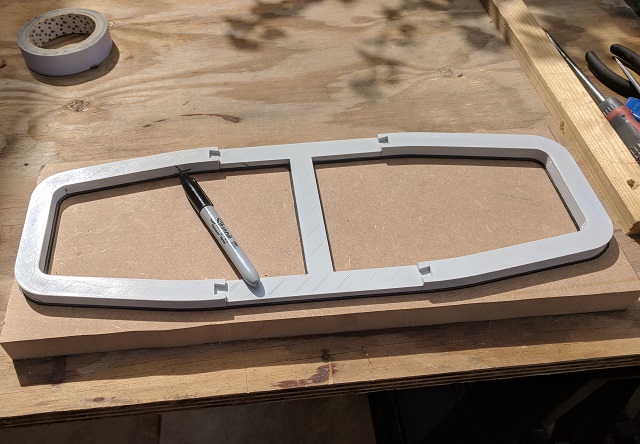
I rough cut the MDF slices using a bandsaw, drill, and jigsaw.
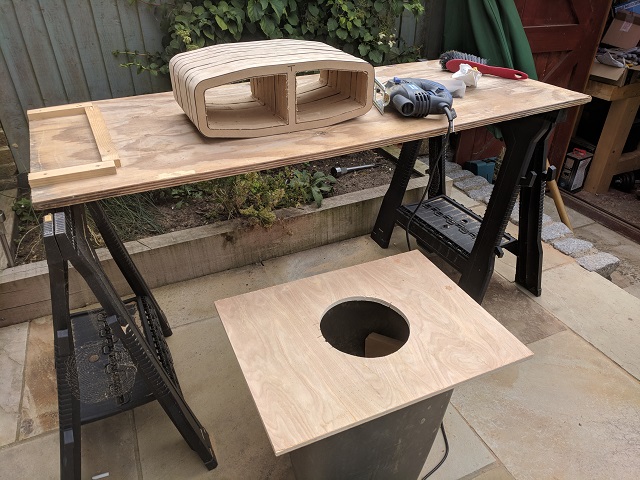
Then I attached my 3D printed template with double sided tape and used a flush cut bit in my router table to trim the slices to their finished shape.
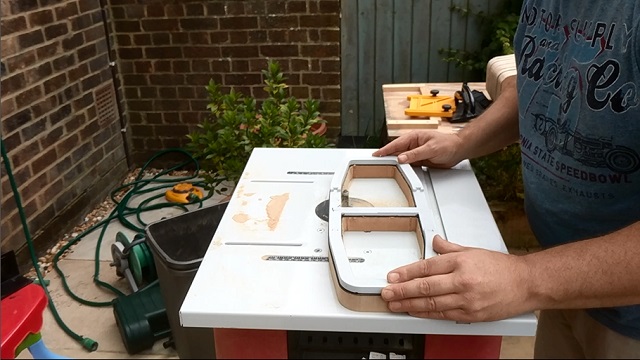
The finished slices turned out really nice..
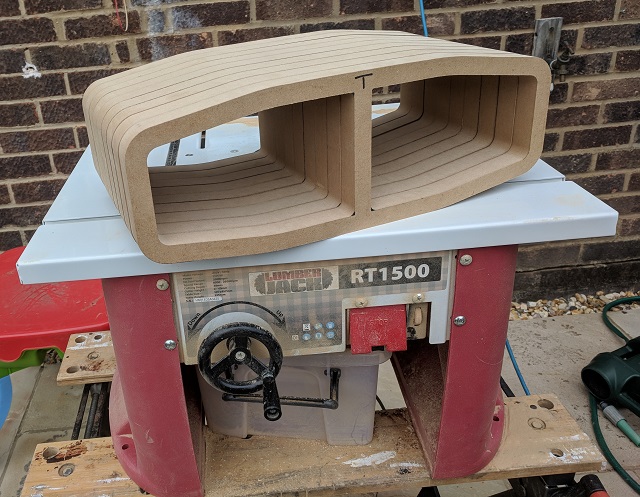
Next was glueing the slices together to form the speaker cabinet. This was actually quite a pain, as the slices kept sliding around on the glue. I ended up glueing just one slice at a time and using some weights to hold them in place. Glad the weights came in useful for something!
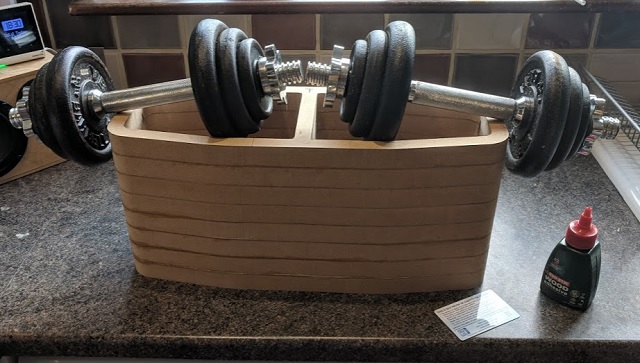
I then planed and sanded the cabinet.
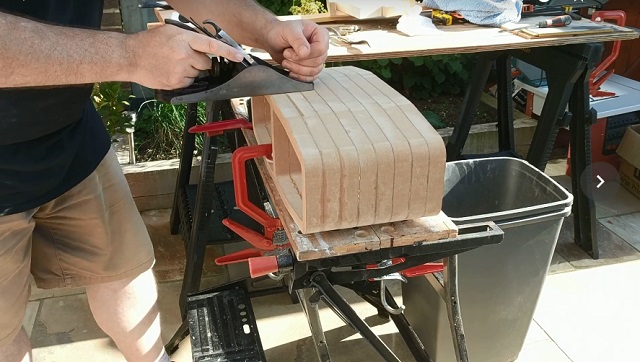
The cabinet was cleaned with a tack cloth to remove any dust and then I applied paint to the cabinet with a roller. I used a product called Tuff Cab from Blue Aran, a specialist speaker company located about 5 mins from where I work. Tuff Cab is a specially formulated speaker cabinet paint that dries to a hard wearing waterproof surface. It requires no sealing and is applied directly to bare wood/plywood/MDF. With a small roller it is easy to apply and leaves nice uniform surface.
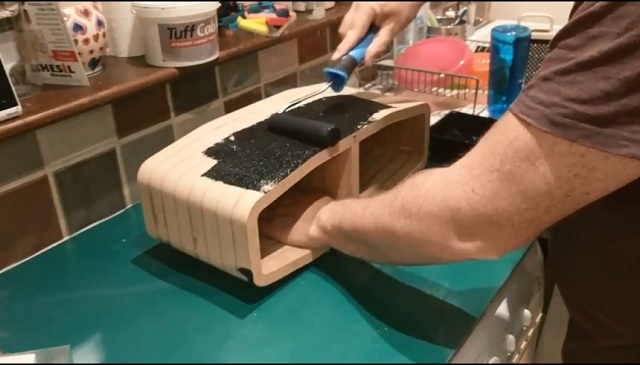
Once the first coat is dry I will sand it to further elininate the slice joints. Very pleased so far.
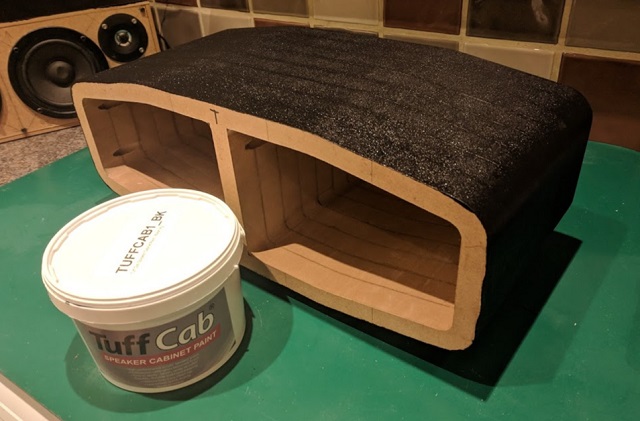
After several more sessions of painting and sanding I managed to get rid of most of the visible slice lines. I bought a random orbit sander which made a massive difference to the quality of the finish.
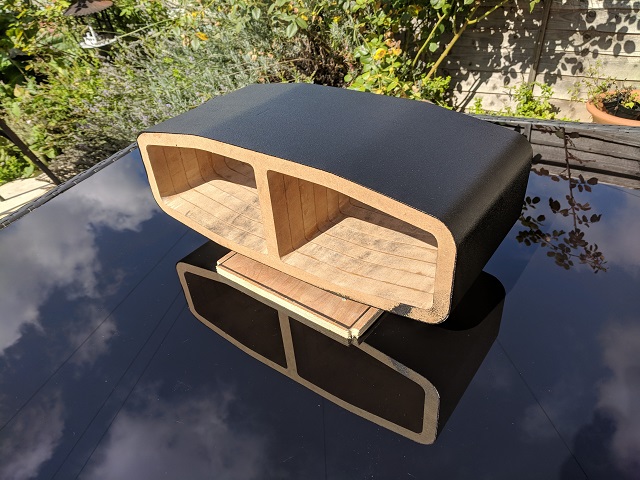
I then turned my attention to the front panel. I glued a layer of 5mm acrylic between 2 layers of cherry to form the front panel. I used 2 part epoxy to glue the layers together. The acrylic will be lit from behind by LEDs.
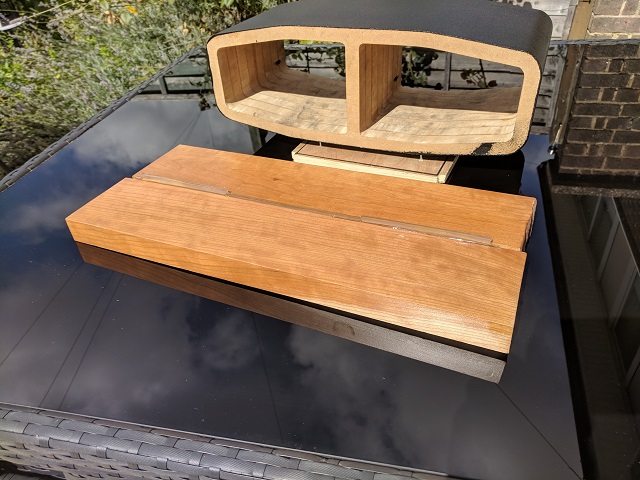
I then used my 3D printed template to mark the outline of the front panel.
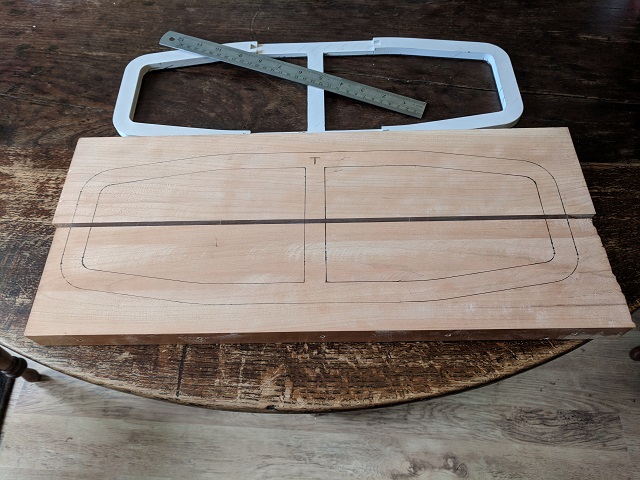
I then used my router to cut out the woofer speaker holes. The tweeters were drilled with a forstner bit. Off camera I reattached the template and cut the panel blank to finished size, again using my router table and flush trim bit.
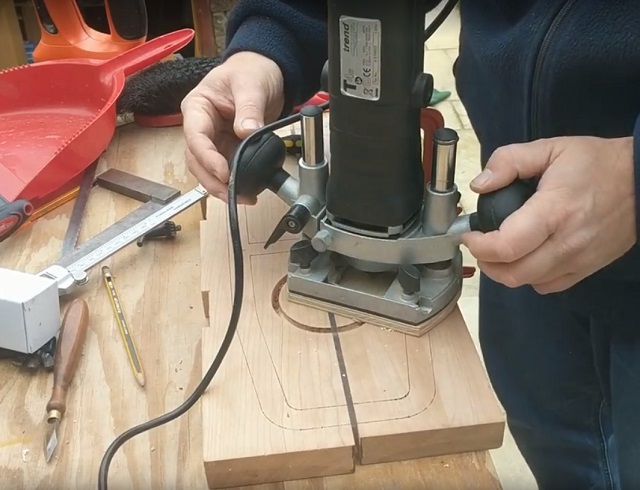
Using Forstner bits I drilled out the holes in the rear panel for the bass reflex ports.
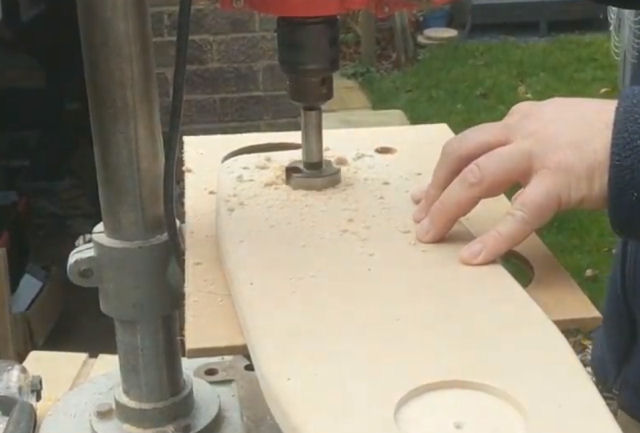
The bass reflex ports are also 3D printed to the precise length described in Overnight Sensation design. These fit the holes in the rear panel very tightly.
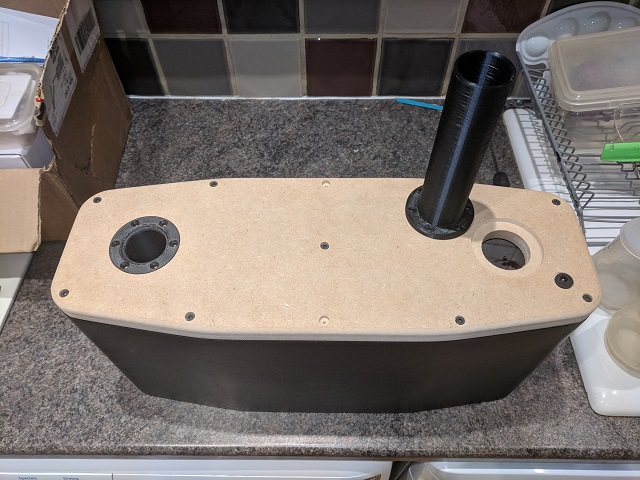
I painted the rear panel again using the Tuff Cab paint and a roller.
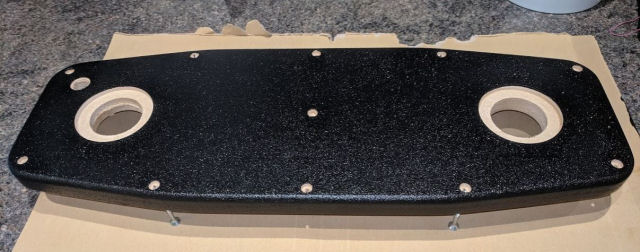
I installed the left crossover directly onto the the rear panel with hot glue.
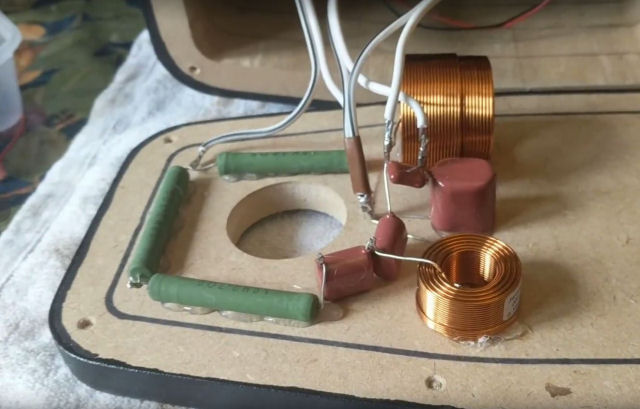
The right crossover was also attached directly onto the the rear panel along with the Chromecast Audio, 12v to 5v isolated DC to DC converter, and Sonoff smart switch.
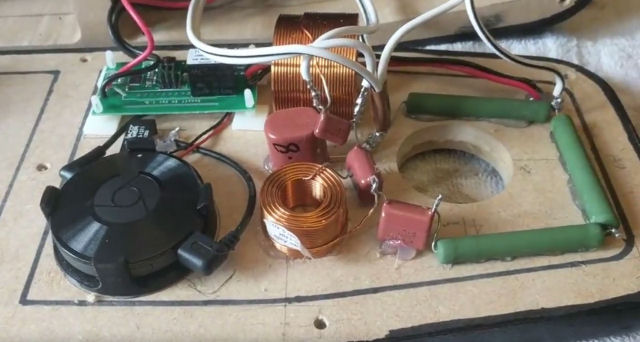
View inside the right speaker chamber where the amplifier, woofer and tweeter are mounted. I made custom aluminium brackets to hold the woofers in place. You can also see some of the LEDs used to back light the centre perspex strip.
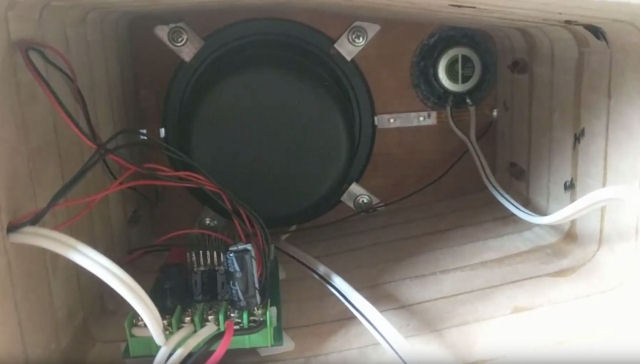
It was then time to bolt the rear panel in place and test this bad boy out. Here is how the finished speaker looks.
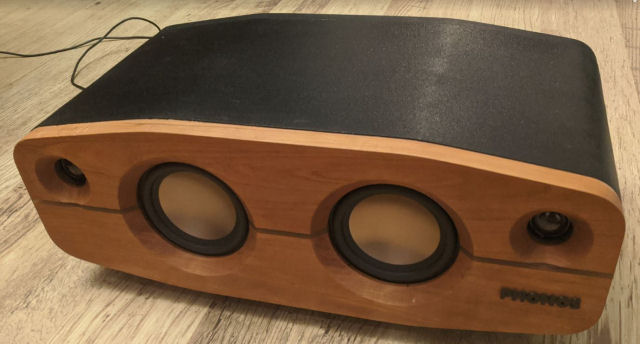
Rear view including 3D printed ports.
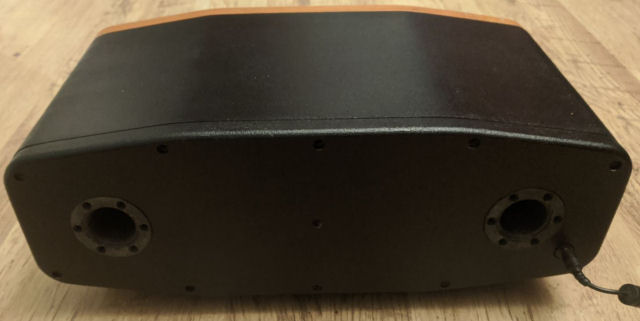
Front view with the power on and LEDs lit.
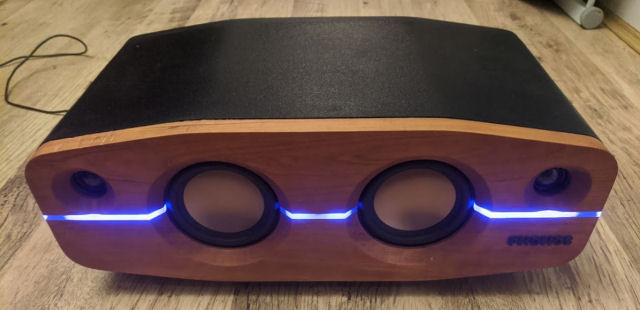
Another front view.
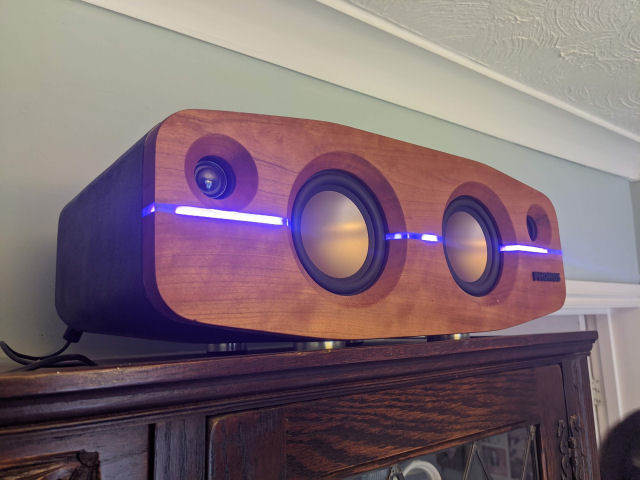
How does it sound?
In a word, fansastic. Compared to V1 speaker it is like night and day. I was eagerly anticipating the improvement in sound quality that the much praised Overnight Sensations design would provide and I was not disappointed. Warm, rich, with detailed top end sparkle and barely believable bass from the modest woofer size. My congratulations to Paul Carmody for his wonderful design and generosity in sharing it with the speaker building community.
Design changes
- Single perspex strip - I ran out of clear perspex so I ended up sandwiching just one line of perspex rather than the two shown in the initial rendering.
- less rounded front - due to the problems with the router bits on the uphill cherry grain I decided against rounding over the edges and risk damaging the wood further, so I just took the edges off with sandpaper. I also decided against the curved front of the original design. I spent enough time on other jigs so I decided to just have a flat front baffle. Maybe if I make another it will have the curves front.
- increased cabinent taper - I slightly increased the taper of the front profile compared with the original design which I thought was a little chunky.
- Added a Sonoff - this smart switch allows me to turn the amplifier section on and off by either the Google Assistant or via the Sonoff app. Not to be confused with Sonos.
- Added Phonos Logo - I 3D printed a logo for the speaker to try and give it a factory made look. I decided on the name "PHONOS" as it is a portmanteau of "Phoney" and "Sonos". My little joke and tribute to Sonos.
What went right/wrong?
- Slice bands showing through paint - I had trouble with the painting of the sliced box. Despite sanding it all perfectly smooth after each application of paint with the roller I could still see the joint lines. In the end I put this down to the paint adhering differently to the MDF and the glue in the joints. If doing this again I would either seal all the MDF prior to rollering on the paint with a watered down glue solution or maybe an epoxy layer.
- Router climbing out chewing up one edge - Yes the pics do not lie. I had a problem with the router bit catching on the grain of the cherry in one place and it chewed up that edge pretty badly. I glued it all back as best I could but it still looks a bit gnarly. Not sure what I could have done differently as I was taking the router cuts nice and slow. Hey ho
- Clear perspex not giving even diffuse ilimination - I would use a frosted perspex if making the front again for more even spreading out of the light from the LEDs.
- patchy colouring of the cherry - When applying the danish oil finish to the cherry several areas took the finish differently giving a patchy appearance. This has reduced a bit oafter several layers of danish oil and a few months later it is not quite as prominent but is still frustrating. I suspect that the cause might be changes in grain direction.
- 3D printed parts - My 3D printer was very useful for a number of parts for this project. The 3D printed router template gave me very consistent MDF slices requiring minimal adjustment. The 3D printed bass reflex port tubes allowed turned out very well. I also 3D printed the PHONOS logo and a snap in holder for the Chromecast Audio.
Summary
I thoroughly enjoyed this project and listen to the speaker every day, the sound quality makes me smile everytime I use it. Will I build another? Maybe.....